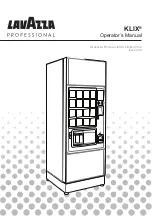
GENERAL DESCRIPTION OF A FACSIMILE
2–4
Fig. 2-1 Analog Line and Digital Line
In Japan, there are lines exclusively for facsimile communications called
Facsimile communication network services. As a facsimile does not hold
conversations simultaneously like a telephone, the facsimile adopts a
method of storing the documents to be transmitted on the network, and
then transmitting them at once using a high-speed line. By this method, the
line is separated from the facsimile after the document is stored, to ensure
efficient use of the line. For this reason, you are charged by the number of
document sheets that you transmit regardless of the transmission time.
1.5
Types of
ITU-T
Recommendations
This section describes the main details of recommendations relating to G3
and G4 facsimile.
1.5.1 G3 facsimile-related recommendations
• T.0 (Classification of facsimile terminals for document transmission
over the public networks)
• Terminals for use over the public telephone network (Group 3 termi-
nals)
Exchange
Exchange
Analog Line
Digital Line
G4 facsimile,
digital telephone,
etc.
G4 facsimile,
digital telephone,
etc.
Telephone,
G3 facsimile, etc.
Telephone,
G3 facsimile, etc.
















































